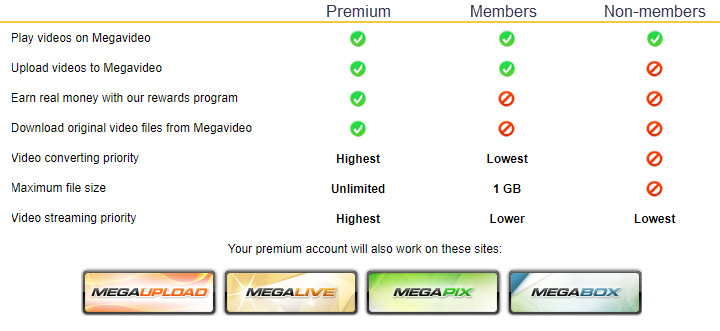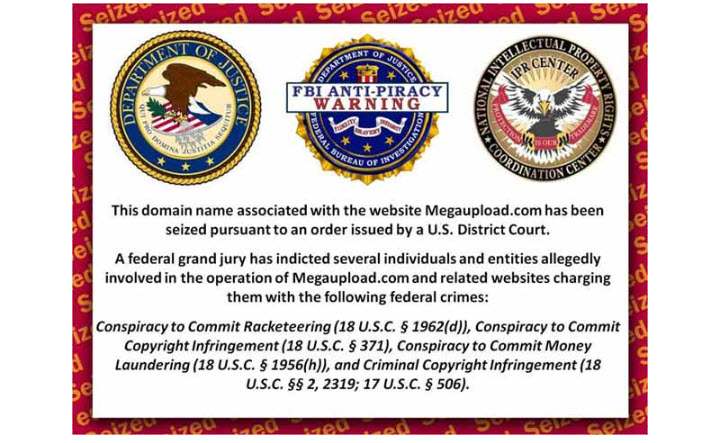Megavideo was an online video streaming platform founded in 2005 by internet entrepreneurs Kim Dotcom and Mathias Ortmann. Billed as a "leader in online video", Megavideo enabled users to easily share and watch videos in high definition quality through its website megavideo.com.
By 2009, it had become one of the largest video streaming hub on the web, with over 29 million unique visitors per month. At its peak, megavideo.com boasted over 4 million videos and garnered more traffic than Hulu and other major streaming companies.
However, it did not continue growing like its competitors and was taken down permanently. It went through a long legal battle for copyright infringement and had a big impact on related industries. This post will delve into what happened to megavideo.com, including its rises and falls, and the aftermath of its shutdown.
Services of Megavideo.com

Full HD Video Streaming
One of the key features that fueled Megavideo's popularity was its support for streaming videos in Full HD 1080p resolution. At a time when many video sites imposed limits on length and quality, Megavideo stood out by allowing users to upload and share feature-length videos in crisp high definition.
Users could watch movies, TV shows, music videos, viral clips, and more in 1080p HD quality without lengthy buffering times. Megavideo also offered HD rentals for premium movies and shows. Subscribers could stream unlimited titles in 1080p resolution from a catalog of over 25,000 options. This was groundbreaking in making HD rentals easily accessible years before other services.
Powerful Upload and Download
In addition, Megavideo also stood out for its file uploading and downloading capabilities. Users could rapidly upload large video files to the site thanks to its fast upload speeds and lack of size restrictions.
Once uploaded, the videos could be quickly downloaded by others through Megavideo's download manager. At a time when downloading video content was tedious and slow, Megavideo enabled users to get full videos in MP4 format with just one click.
The site's download manager significantly sped up downloading files from Megavideo. Videos could be downloaded at customers' maximum, unthrottled internet speeds. This made obtaining hours of video content far faster than what was typical on the web.
Megavideo also gained popularity by removing download wait times for its premium subscribers called Megakey users. This allowed unlimited, instant downloading of videos. For non-subscribers, lengthy download waits applied.
What's the difference between Megavideo and Megaupload?
The file sharing features might remind you of megaupload.com, its parent site. They were closely connected video sharing platforms created by the same founders, Kim Dotcom and Mathias Ortmann.
Relying on the same infrastructure to host the library of video files, Megavideo focused on online streaming while Megaupload specialized in file downloads. They were seized on the same day in 2012 amid copyright infringement allegations, but Megavideo faced less scrutiny as a streaming-first platform.
Megavideo Membership
Magavideo offered free services but restricted video access and bandwidth and blocked itself after 72 minutes of video playback, resuming after 54 minutes. These restrictions negatively impacted the user experience and compelled many people to buy its premium plan. As a result, it got infamous for this practice.
To sell its services, Megavideo designed different tiers of membership to access premium features and perks. This basic paid subscription ($9.99/month) removed download limits and waiting time and enabled instant downloads and unlimited streaming in standard definition quality. The premium membership ($19.99/month) added the ability to stream in HD 1080p quality and watch on 2 devices concurrently. It also increased allowable daily downloads.

Video Publisher Rewards
To encourage users to share more videos on its platform, Megavideo launched a rewards system for users who shared quality original videos. A user could earn one reward point per video view, and accumulated points could be redeemed for premium membership or cash.
- 10k views: 1 month premium membership
- 50k views: 6 month premium membership
- 100k views: 1 year premium + $100 USD
- 500k views: Lifetime premium + $500 USD
- 1m views: $1500 USD
- 10m views: $10000 USD
Meanwhile, it provided publishers with detailed analytics, exposure, community interaction, and simplified built-in monetization through affiliate programs and contests. The combination of revenue sharing, visibility, community features, and analytics brought creators a dynamic platform to build an audience and profit from their work, so long as everything was going under legal copyright.
Megavideo vs. YouTube
Megavideo and YouTube were both founded in 2005 as early video sharing platforms. During Megavideo's existence from 2005 to 2012, it retained limitations like wait times and download limits for non-paying users and faced growing criticism for lax copyright enforcement leading to piracy issues.
While, YouTube invested heavily in Content ID and licensing deals to address copyright concerns. It also focused on improving user experience through innovations like smooth streaming, embedding capabilities, and unlimited HD video. When YouTube introduced robust monetization options like its Partner Program and advertising platforms, Megavideo still relied primarily on premium subscriptions.
| Megavideo | YouTube | |
|---|---|---|
Founded |
In 2005 by Kim Dotcom |
In 2005, acquired by Google in the next year |
Current Status |
Shut down | Active |
Video Quality |
HD for premium members | Free HD for all |
Copyright Protection |
Lax, pirated | Advanced (Content ID) |
Revenue Model |
Premium subscriptions, limited ads | Robust ads, revenue sharing |
User Experience |
Waiting time, download limits | Smooth for all users, ads |
Content Types |
Exclusively video | Video, music, live, shorts |
Analytics |
Basic creator analytics | Advanced real-time analytics |
Community Tools |
Limited social features | Comments, likes, playlists, channel customization |
Then What Happened to Megavideo.com
In addition to megavideo.com, the Mega world offered a large variety of online tools to share videos, movies, music, pictures, and other files. And it was the business model that encouraged and rewarded users to upload and stream copyrighted content.
Though these websites addressed DMCA notice of copyright infringement, they lacked fingerprinting tech and did not actively monitor, screen, or otherwise review the media that had been uploaded to the servers, resulting in rampant piracy.
Major media companies, like Disney and Paramount, sued Megaupload starting around 2010 for mass copyright infringement. Mega sites were considered "rogue sites" under the proposed Stop Online Piracy Act (SOPA). Shortly after, the Motion Picture Association of America (MPAA) claimed over $500 million in losses due to piracy enabled by this company.
On 19 January 2012, the United States government shut down megaupload.com and related sites including megavideo.com, and replaced them with a statement that the domain had been seized. And all Megavideo services and accounts were discontinued instantly.

Kim Dotcom and other senior managers of his sites were indicted on federal charges including criminal copyright infringement, and money laundering. The founder remains a wanted fugitive by the U.S. government for his central role in enabling mass copyright infringement through his network of file-hosting sites.
The Ripple Effects of Megavideo Closure
The Megavideo takedown represented a major upheaval for the ecosystems that had depended on its central role as a video streaming platform. Its shutdown had ripple effects across the internet ecosystem, user base and video streaming spheres.
The Retaliatory Attacks by Anonymous
The hacktivist group Anonymous perceived this case as an assault on hacktivist culture and internet freedoms. And it launched widespread retaliatory DDoS attacks on the US government and industry sites. While the initial wave of the most disruptive attacks lasted around 1-2 weeks, lingering effects persisted in the following months. Complete normalization likely took 1-2 months for most sites as residual attacks tapered off.
Users' Efforts to Revive the Site
The massive user base was shocked and outraged and immediately began rallying to try and revive the site that had been home to so much user-uploaded content and collaboration. Users started online petitions, crowdfunded legal defense funds, launched mirror sites, and attempted to recover lost data from its servers. However, with the domain seized and servers offline, these efforts hit insurmountable roadblocks.
Tighter Policies Around Copyrighted Content
In reaction, many file hosts implemented more restrictive policies around copyrighted/pirated content to avoid facing legal issues themselves. This included content filters, shortened upload limits, and increased takedowns. Besides, there was an increased wariness around streaming and downloading pirated content and the use of major online video platforms, due to uncertainty about which sites were safe.







